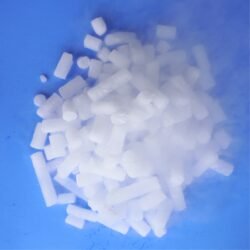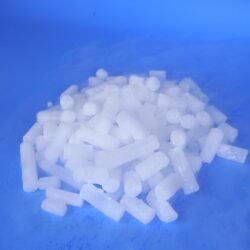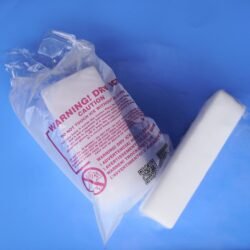Dry ice blasting has emerged as one of the most effective and environmentally friendly cleaning methods for industrial applications. This technique uses solid carbon dioxide (CO2) in the form of dry ice, which is propelled at high speeds to clean surfaces without causing damage. At SubZero Dry Ice, we provide high-quality dry ice products, such as dry ice pellets, specifically used in dry ice blasting machines. While we don’t offer the blasting service itself, we supply the dry ice necessary for businesses to carry out this powerful cleaning process. In this blog post, we will explore the advantages and disadvantages of dry ice blasting.
Advantages of Dry Ice Blasting
- Non-Abrasive Cleaning: One of the biggest advantages of dry ice blasting is that it is a non-abrasive method. This means it can clean surfaces without causing any damage to the underlying material. Whether it’s used on delicate machinery, historic buildings, or sensitive electronic equipment, dry ice blasting effectively removes contaminants without scratching or eroding the surface.
- Environmentally Friendly: Dry ice blasting is an eco-friendly solution because it doesn’t rely on hazardous chemicals or produce secondary waste. Unlike other cleaning methods, such as sandblasting or chemical stripping, dry ice sublimates upon impact, turning into CO2 gas, leaving no residue behind. This not only eliminates the need for a cleanup process but also reduces environmental harm.
- Effective on Tough Contaminants: Dry ice blasting is known for its ability to remove stubborn contaminants like grease, oil, adhesives, and paints. It’s particularly effective in industrial settings where traditional cleaning methods may struggle. The cold temperature of dry ice pellets helps to freeze and break down the contaminants, making them easier to remove.
- Minimal Downtime: One of the key advantages of dry ice blasting is that it reduces downtime in industrial operations. Since there is no need for post-cleanup or drying time, businesses can resume operations much faster. This makes it an ideal solution for industries that can’t afford prolonged shutdowns.
- Safe for Electrical Components: Dry ice blasting can be used on electrical components without the risk of causing moisture damage, which is often a concern with other cleaning methods. Since dry ice sublimates and doesn’t leave behind water or chemicals, it’s safe to use in areas where electrical equipment is present.
Disadvantages of Dry Ice Blasting
- Initial Equipment Cost: One of the disadvantages of dry ice blasting is the high upfront cost associated with purchasing the blasting equipment. While the long-term savings on labor and downtime can offset this expense, the initial investment may be prohibitive for smaller businesses or those not needing frequent blasting services.
- Limited Surface Cleaning: While dry ice blasting is effective for many applications, it may not be suitable for every type of surface. For example, it might not be as effective on heavily rusted materials compared to more abrasive methods like sandblasting. It’s important to assess the material and contaminants before deciding whether dry ice blasting is the right choice.
- High Operating Costs: The cost of purchasing dry ice pellets for ongoing blasting operations can add up. Additionally, the need for specialized operators and maintenance of blasting machines contributes to higher operating costs. While SubZero Dry Ice provides top-quality dry ice products, it’s crucial to budget for the consistent supply of materials.
- Noise Levels: Dry ice blasting can be quite noisy, which may be disruptive in certain environments. Although it’s generally quieter than traditional blasting methods, the high-speed propulsion of dry ice pellets can still produce significant sound levels, requiring hearing protection for operators.
- Requires Adequate Ventilation: Since dry ice sublimates into CO2 gas, proper ventilation is essential during blasting to prevent the buildup of carbon dioxide in enclosed areas. In poorly ventilated spaces, CO2 levels can rise, posing health risks. It’s crucial to ensure the work area is well-ventilated and that operators are aware of the potential hazards.
In conclusion, dry ice blasting offers numerous advantages, including non-abrasive cleaning, environmental benefits, and effectiveness on tough contaminants. However, businesses must also consider the disadvantages of dry ice blasting, such as high equipment and operating costs, limited surface applications, and the need for proper ventilation. At SubZero Dry Ice, we offer all the necessary materials for this process, including dry ice blocks, dry ice pellets, and dry ice insulated gloves to ensure safe handling. If you’re looking for the best materials for dry ice blasting, contact us today to learn more about our offerings.




